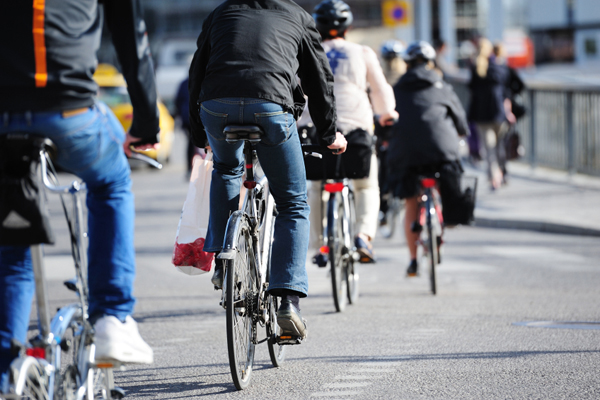Safe city biking: It can happen

Cycling can have enormous benefits both for our own health and the health of the environment. Urban areas are uniquely primed to allow commuters to drastically reduce their carbon footprint by choosing to bike to work rather than drive or even use public transportation. But in the United States, fewer than one percent of commuters actually choose this option.
“The number one reason that keeps people from riding a bike is traffic danger,” said Peter Furth, a Northeastern professor of civil and environmental engineering in the College of Engineering. “There are other reasons like weather and having a bunch of kids to drive around, but the one thing we engineers can do something about happens to be the main reason.”
Furth, in collaboration with the Mineta Transportation Institute of San Jose State University, recently released a research report on the bike-related traffic safety of that city.

Peter Furth
The researcher developed a system for classifying streets by level of traffic stress and found that the mainstream population will only accept a moderate level of congestion.
“When you ask, ‘Where can that mainstream population ride a bike?’ and map it out, you’ll see you can’t get from here to there” without encountering traffic stress, said Furth.
Maps showing only low-stress links reveal a large collection of low-stress “islands” separated from one another by barriers that can only be crossed using high-stress roads. Barriers include freeways and wide arterial streets that lack safe crossings.
Currently, roughly 5 percent of level two bike riders — those comfortable riding on streets with minimal car traffic — can ride to work without slipping outside their comfort zone. “We could raise that to 12.5 percent with a modest set of improvements,” said Furth.
U.S. guidelines for bikeway design place bicycles in the same category as motorcycles, which means that bicyclists could pedal in traffic alongside motorists. But Furth said this setup would make level two riders rather uncomfortable.
In 1997, Furth took a sabbatical to Holland and had something of a revelation. “It was like night and day,” he explained. “They went everywhere on a bike, because it was safe to ride a bike everywhere.”
More than 25 percent of Dutch commuters ride to work. And Holland’s bike-related death rate is eight times lower than that of the U.S. rate.
So what is Holland doing right? “Cycle tracks,” said Furth. Unlike traditional U.S. bike lanes or bike paths, these are physically separated from car traffic but still run along the road.
Furth hopes to perform similar studies for other cities around the country, including Boston. He is part of the movement, he said, to “awaken Americans — and especially American engineers — to the possibility of safe bicycling.”





